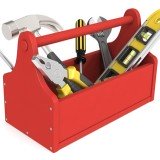What is Considered Normal Wear and Tear?
How does one define normal wear and tear? Find out the answer here and determine whether the landlord or tenant should pay for the property repairs.
Normal Wear and Tear Definition
The definition of this term has always been hotly debated between landlords and tenants for a simple reason - The tenant doesn't have to pay for any property repairs due to ordinary wear and tear. In other words, the landlord has to be responsible for the repairs and cannot deduct money from the security deposit to cover repair costs.
While there is no single definition that is cast in stone, wear and tear damage can be described as such: "Deterioration in the condition of a property that occurs during normal use."
By property, we're referring to the premises and its fixtures, furnishings and appliances. By normal use, it means there was no abuse, negligence or accident involved.
So summing up everything that we have learned so far, who is responsible for what repairs in a rental property?
Landlord - Responsible for wear and tear damage and maintaining the rental property in a habitable condition.
Tenant - Responsible for property damages caused by abusive, negligent or accidental actions of the tenant, the tenant's guests and the tenant's pets.
If you're a rental property owner, then we highly recommend that you make use of our landlord inspection checklist to conduct home inspections before the tenant moves in and at the end of a lease.
Normal Wear and Tear vs Damages
|
Item |
Reasonable Wear and Tear |
Damages |
So recapping on what we have covered so far, "reasonable wear and tear" column = what the landlord has to repair or replace and "damages" column = what the tenant has to repair or pay for.


